The 28 best horror movies of all time, from the scariest slashers to mind-bending psychological thrillers
The horror genre consistently produces some of the most brilliant and cutting-edge films.
Insider has rounded up some of the best scary movies of all time.
While not all of these films were hits at first, they're worth a watch.
Horror films can push the boundaries of the genre, offer incisive social commentary, and give us the creeps — all in one frightening, bloody feature.
Insider's resident horror experts have a lot of thoughts on scary movies — "Malignant" is a masterpiece! "The Witch" is for the girls! — so we decided to round up the best and scariest horror movies that you must watch before you die.
Warning: Demons, murderous biker gangs, evil twins, and more things that go bump in the night ahead. Read on if you dare!
"Night of the Living Dead" (1968)

George Romero's "Night of the Living Dead" might've spawned numerous middling sequels, but the original is a classic. The black-and-white feature sees Barbra (Judith O'Dea) try to survive in a secluded farmhouse while a zombie outbreak sweeps across the United States.
It might not be the very first zombie movie, but it's certainly the one that brought the shuffling undead to the masses. Romero's use of gore in the film is so effective, it comes across in all its hideous glory even in black and white.
While O'Dea does a great job of settling the audience in for "Night of the Living Dead," Duane Jones is the real star of the show thanks to his enduring performance as fellow survivor, Ben.
Romero even adds a sprinkle of social commentary with its heartbreaking climax as Ben — a Black man — is murdered by a gun-toting militia who mistake him for a zombie. It's a devastatingly effective ending. — Eammon Jacobs
"The Exorcist" (1973)

William Friedkin's "The Exorcist" shocked audiences around the world in 1973 thanks to its brutal depiction of a young girl, Regan MacNeil (Linda Blair), who has been possessed by the demon Pazuzu.
The shocking violence foisted upon Regan is infamous, and for good reason. That crucifix scene is still unforgettably brutal. And Blair's performance throughout is particularly impressive considering she was only 12 at the time of filming. She helped make some of the most iconic images in cinema history — like Regan crab-walking down the stairs, for example.
One of the most understated elements of the film is Father Karras (Jason Miller) and his own crisis of faith after the death of his mother. This makes his battle with Pazuzu all the more impressive, as he pushes through his own issues to help save Regan.
Sure, "The Exorcist" might look and feel a bit tame compared to modern standards. But Friedkin's intense atmosphere ensures that it will always be an undeniably creepy film.
Anyone else hear "Tubular Bells" playing ominously in the distance? — EJ
"Hausu" (1977)

No horror movie on this list leans into its absurdity quite like the 1977 Japanese film "Hausu" (or "House").
Inspired by the fears of his preteen daughter, director Nobuhiko Obayashi combines absurdly unrealistic special effects with a genuinely sobering tale about a woman who becomes an evil spirit after her lover is killed in the carnage of World War II.
While "House" isn't very scary by today's standards, it's still worth a watch for the absurd plot, creative deaths of the characters, and beautiful, if unrealistic, special effects.
Plus, there's an unforgettable fluffy cat named Blanche who may or may not be possessed as well. — Libby Torres
"Suspiria" (1977)

No horror-movie roundup would be complete without Dario Argento's "Suspiria," which juxtaposes beautifully-colored sets and costumes with supernatural horrors. A young American ballet student named Suzy (Jessica Harper) is the focus of the story, but her ballet studies are quickly interrupted by some seriously weird shit going on at the prestigious dance academy where she's studying.
"Suspiria" is a masterclass in aesthetically-pleasing nightmare fuel, and the lighting alone is enough to make any film buff drool. While the story might not impress more jaded horror fans, the film's beautifully-composed shots and attention to detail make it worth checking out. — LT
"Dawn of the Dead" (1978)
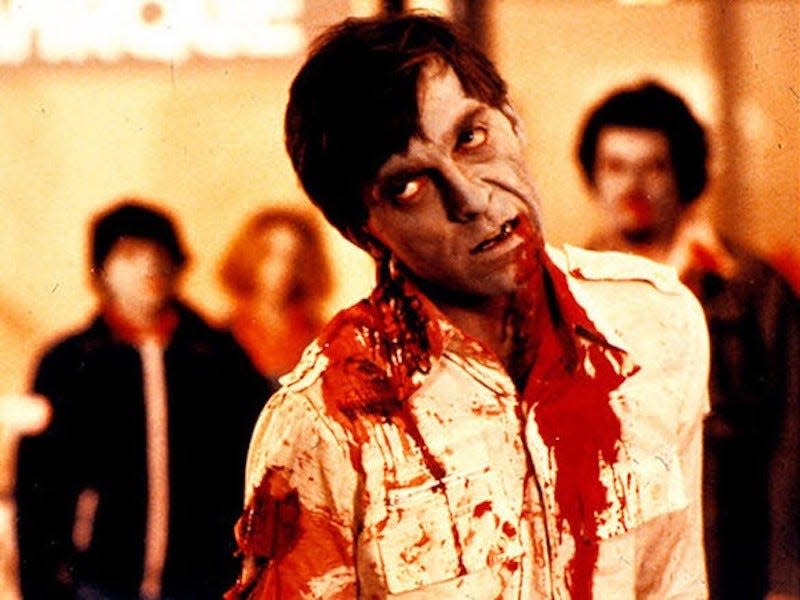
Yes, we did mention that some of Romero's many sequels don't live up to the hype of the original. But his first follow-up, "Dawn of the Dead," is masterful. Not only does it expand on how the apocalypse has affected the rest of the country, it does so by smartly critiquing consumer culture.
"Dawn" sees a reporter and a few other survivors hole up in a shopping mall, making it safe from the zombies outside. But in doing so, they take advantage of the situation and loot some of the shops to treat themselves during the outbreak.
Obviously it isn't long before the dead wind up getting inside, and all hell breaks loose. It's an unsubtle jab at greed and consumerism, and it works a bloody treat.
And it does all that while also delivering bigger action and more gore. What's not to love? — EJ
"The Evil Dead" (1981)

While the effects might look dated by modern standards, Sam Raimi's "The Evil Dead" is a horror classic that pushed the boundaries of what the genre could do. It follows Ash Williams (Bruce Campbell) and his friends as they go stay in an old cabin in the woods for a weekend away.
But after reading from a creepy old book called the Necronomicon, supernatural forces start possessing Ash's friends (and Ash's hand) and all hell breaks loose. Raimi makes sure the film stands aside from typical zombie movies, as the undead become demonic creatures called "Deadites."
They've got no issue with torturing and brutalizing their victims in horrifying ways, and they constantly keep the audience on their toes with how unpredictable they are.
Because Raimi made "The Evil Dead" on a small budget, it has a scrappy, grimy feel to it that really works in its favor considering the spectacularly vile events that unfold in (and around) the cabin. And hey, if you liked it, then we've got good news: There are four sequels and a TV show to dive into! Enjoy. — EJ
"Possession" (1981)

Isabelle Adjani gives an incredibly unhinged performance in this cult-classic film, which follows Mark (Sam Neill) as he returns home from a work trip to find that his wife (Adjani) wants a divorce. She says she's not sleeping with other people, but her visits to a grotesque tentacled monster in an abandoned apartment would suggest otherwise.
"Possession" quickly devolves into chaos soon after it begins, and Anna's unsettling miscarriage in the subway will likely go down as one of the most deranged breakdowns in film history.
It's not an easy watch: The tension between Mark and Anna alone is excruciating, let alone the violence and gore. But fans of "Midsommar," the other failed relationship horror film on this list, will find lots to unpack in "Possession" as well. — LT
"The Thing" (1982)
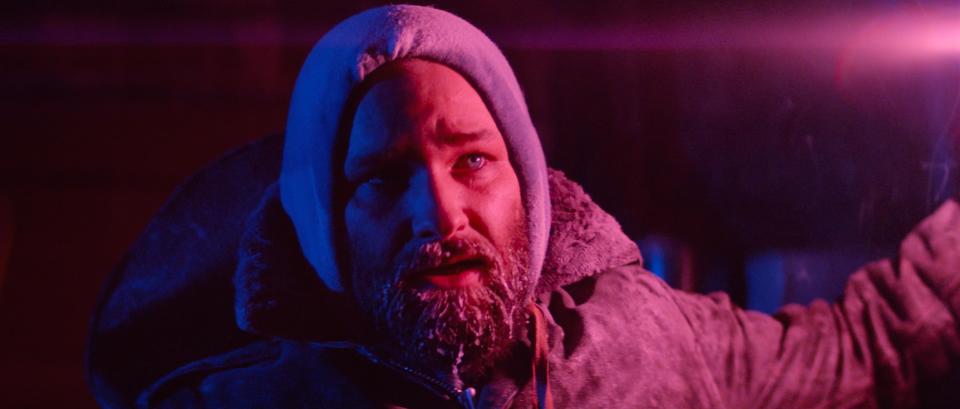
Despite being made in the early 1980s, John Carpenter's "The Thing" is widely regarded as having some of the best practical effects of any horror film ever. Carpenter himself now seems to be a bit numb to the enduring power of the film's effects and the legacy of "The Thing" as a whole, but we think it's easily one of the best horror films ever made.
"The Thing" follows a group of Antarctic researchers who are picked off one by one by a mysterious alien specimen that at first invades, and then assimilates, whichever life form it's able to access. (The first victims in the film are, sadly, the base's adorable sled dogs.)
The creature effects are eye-popping, creative, and spectacularly gory, but the film's exploration of the tension that slowly but surely builds among the base's survivors is memorable in its own right. Plus, the nihilistic final scene is a delightfully dark way to end a film, if we do say so ourselves. — LT
"Videodrome" (1983)

This film from David Cronenberg has everything: Debbie Harry, mind-control, grotesque special effects, and snuff films, to name a few. Following the escapades of local TV station president Max to bring more unique programming to his viewers, the film quickly transcends reality as Max spirals deeper into the world of malignant brain tumors and conspiracy theories.
"Videodrome" may lack jump scares and a Final Girl, but it's still deeply unsettling. Cronenberg not only crafts a terrifying movie, but a cerebral one at that — and you'll definitely think about violence in movies and on TV a little differently after watching this. — LT
"A Nightmare on Elm Street" (1984)

"A Nightmare on Elm Street" was frighteningly original back in 1984. It sees a group of teenagers terrorized by a gruesome serial killer, Freddy Krueger, who hunts them in their dreams.
It's such a cool concept, tapping into the idea that a nightmare could be something even more sinister. And Robert Englund's gleefully depraved performance is so much fun to watch as he butchers the teens in their sleep.
Perhaps the most impressive scene is the moment where Glen (a young Johnny Depp in his feature film debut) is pulled into a hole in his bed, before a torrent of blood explodes out of it as he's killed by Krueger.
With Krueger's grisly visage, and those terrifying clawed gloves, there's no wonder that he's become one of the most iconic horror villains of all time. — EJ
"The Fly" (1986)

David Cronenberg is known for the horror he inflicts on human bodies in his films, and "The Fly" is no exception. Jeff Goldblum stars as Seth Brundle, a cocky scientist who thinks he's perfected the art of teleporting, only to inadvertently fuse his genes with those of a housefly.
He begins to transform into a monstrous half-fly, half-human creature, much to the terror of his girlfriend, Ronni (Geena Davis). Cronenberg deftly combines an unsettling storyline with some of the nastiest special effects to ever appear on screen.
If you don't want to see what a human body would look like if it was combined with an insect, you probably should skip "The Fly." But those of us twisted enough to watch as the carnage unfolds are ultimately rewarded with a uniquely terrifying film that stands the test of time. — LT
"Hellraiser" (1987)

If gross body horror is your thing, then you definitely need to see 1987's "Hellraiser," based on "The Hellbound Heart" by Clive Barker.
The film introduces Pinhead (Doug Bradley) and his hellish crew of Cenobites for the first time, establishing that they're brought to Earth when someone solves a puzzle box, called the Lament Configuration.
But in a smart, atypical move, "Hellraiser" doesn't jump straight into Pinhead and his minions torturing people. Instead, it follows Julia Cotton (Clare Higgins) as she discovers the barely reanimated corpse of her former lover, Frank, in her attic after he escapes from Pinhead's hellish realm. Then, it backfills the Cenobite lore from there.
The film's story about sadomasochistic demons enjoying pain and torture feels much edgier than most typical slasher movies of the '80s. And some of the gory visual effects have to be seen to be believed.
It's a shame that most of the "Hellraiser" sequels descended into utter garbage. But there are a few entries that are definitely worth a watch, and the original is a must-see. — EJ
"Bram Stoker's Dracula" (1992)

At times, Francis Ford Coppola's Gothic horror film, based on the vampire novel by Bram Stoker, can feel a bit overwrought, but that doesn't make it any less fun to watch. Featuring a stacked supporting cast (Keanu Reeves! Winona Ryder! Anthony Hopkins!) and Gary Oldman living it up as a lovelorn Vlad the Impaler, "Bram Stoker's Dracula" brings the vampire story to life with admirable dedication. There's also a love triangle, a big spooky castle, and a doomed romance.
The sets and costumes are beautiful but evocative, and scenes taking place in the asylum are especially unnerving. I'd also like to shout out Mina's (Winona Ryder) fun-loving and horny friend Lucy (Sadie Frost), who seemed like a riot before she met an untimely demise.
All in all, this is the melodramatic vampire movie to end all melodramatic vampire movies — sorry "Twilight!" — LT
"Scream" (1996)

Although slasher movies became hugely popular in the seventies and eighties, they started to lose their impact after a while because of just how many of them revolved around a man in a mask butchering a bunch of teenagers for [insert reason here]. Even reading that sentence, you've probably thought of two or three movies straight away.
But Wes Craven and Kevin Williamson's "Scream" flipped the slasher sub-genre on its head in 1996, thanks to its self-aware script and killer edge. Yes, Ghostface is still a masked killer going around murdering teenagers, but the characters know the tropes and styles that typical slashers adhere to, and they follow horror movie rules to try and stay alive.
Not only that, but the cast is perfect. From Neve Campbell's determined survivor Sidney Prescott, to Courteney Cox's plucky reporter Gale Weathers, every character endears themselves to the audience in one way or another… Until the third act's big reveal, of course.
And then there's the violence. "Scream" has a real bite. The savage opening with Drew Barrymore's Casey Becker is one of the most iconic introductions to a horror movie in the last 30 years. — EJ
"Audition" (1999)

"Audition" is perhaps the most unassuming of all of Takashi Miike's films, at least at first. The beginning of the film reads as a romantic comedy: the efforts of Shigeharu (Ryo Ishibashi) to find a new partner are adorable, and he even enlists the help of a friend to stage a mock casting call for his new wife. Shigeharu soon hits it off with Asami (Eihi Shiina), and the two seem to fall deeply in love.
The only problem is that Asami is hiding a terrible secret, and the second part of the movie devolves into a gruesome nightmare filled with missing fingers and tongues, a wire saw, and needle torture, among other things.
The shift in tone from romantic comedy to chilling torture film is slow but effective, making "Audition" one of the most enthralling horror movies on this list. — LT
"28 Days Later" (2002)

After decades of horror movies with stereotypical slow zombies, British director Danny Boyle and writer Alex Garland delivered a terrifying new take on the undead with 2002's "28 Days Later."
It follows bicycle courier Jim (Cillian Murphy), who wakes up from a coma in a deserted hospital to find that Britain has been ravaged by the "Rage Virus" which makes the infected mindlessly violent. To put it bluntly: fast zombies. If that wasn't enough, they just howl and scream while chasing their victims which cranks up the tension and fear.
Boyle's commitment to capturing a post-apocalyptic Britain is also astounding to see, as Jim wanders through a deserted London. The crew shot those scenes early in the morning to avoid commuters and tourists, and it really paid off.
The film also raises the question of whether humans are worse than the infected. After all, the virus itself came from a lab where scientists were experimenting on chimpanzees. And some of the surviving soldiers try to lure women to their base under the pretense of safety so they can "repopulate" the country.
This startling vision of a modern zombie apocalypse is nothing short of haunting. — EJ
"Shaun of the Dead" (2004)

Much like slashers, there are a countless zombie movies, but there are several that stand out in a sea of gory mediocrity. And another one of those is Edgar Wright's "Shaun of the Dead."
Simon Pegg plays Shaun, a young twenty-something whose girlfriend, Liz (Kate Ashfield) breaks up with him the day before a zombie apocalypse breaks out. And when the hordes of the slow, shuffling undead take to the streets, Shaun decides to try to save Liz and win her back with the help of his hapless best friend, Ed (Nick Frost).
Wright's energetic directing style mixed with the hugely quotable script makes "Shaun of the Dead" an incredibly fun watch. Not to mention, it's crammed with layers of jokes that build on each other in a way that makes the audience feel like part of the gang.
But "Shaun of the Dead" also has a hefty bite, as it doesn't skimp out on the zombie carnage. Whether it's the girl in the garden who gets impaled on a pole, or David (Dylan Moran) being ripped limb-from-limb in the pub, the film's got a viciously grisly streak. — EJ
"Saw" (2004)

Say what you will about James Wan, but the man knows how to execute a twist (and some serious gore).
The first "Saw" film launched one of the most iconic and longest-lasting horror franchises in pop-culture history. Based on an original concept crafted by Wan and his frequent collaborator Leigh Whannell (who also stars in the film), the 2004 film introduces the Jigsaw Killer, a mysterious figure with initially unknown motives who uses deadly traps to test how badly his victims want to survive. The central victims in the first film, directed by Wan, are two strangers (played by Whannell and Cary Elwes) who awaken in a decrepit bathroom. In a parallel narrative, detectives are investigating the identity of the killer.
The terror arises from a mix of the claustrophobic atmosphere, the mystery/thriller elements, and the sheer gruesomeness of the torture — who could possibly forget Elwes' Dr. Gordon frantically sawing off his own foot? It's creepy and disturbing, but it might be best remembered for having one of the best plot twists in movie history. —Caralynn Matassa
"Dawn of the Dead" (2005)

Okay, this is an interesting one. Zack Snyder helmed a "Dawn of the Dead" remake in 2005 that takes Romero's original concept of hiding out in a mall during the apocalypse, and gives it a modern flair.
Because fast zombies had become popular thanks to Boyle's "28 Days Later," Snyder's movie also gives Romero's undead a speed boost. And once again, it proves that reanimated corpses are much scarier if they can suddenly sprint.
Snyder's "Dawn of the Dead" has one of the most shocking and impressive openings to a zombie movie, as Ana (Sarah Polley) wakes up to find a little girl attacking her husband, Luis (Louis Ferreira). He then turns into a zombie near instantly and starts chasing Ana as the rest of their neighborhood descends into carnage.
Once Ana makes it to a local mall and holes up with other survivors, the situation only grows more tense, especially when a pregnant woman gives birth to a zombie baby. Yes, you read that right: a zombie baby. It is wild. — EJ
"REC" (2007)
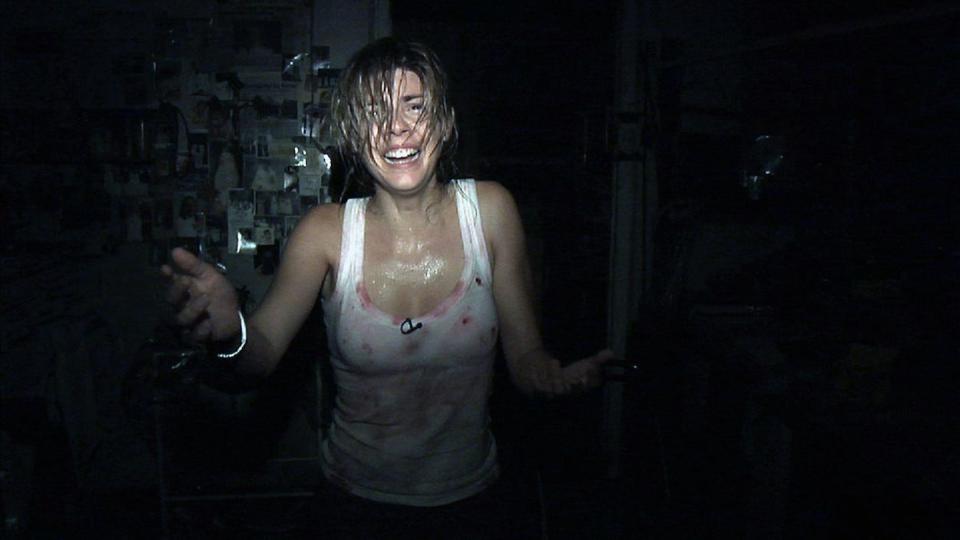
"The Blair Witch Project" and "Paranormal Activity" might be the most famous American found-footage horror movies, but Spanish director Jaume Balagueró injected the style with a sense of pure terror with 2007's "REC."
In the movie, a news team follows a fire crew around for the night when they're called to a mysterious incident in an apartment block. It quickly becomes apparent that a virus has been unleashed, and the infected are ferociously brutal as they bite and tear their way through their victims.
The found-footage style works perfectly as Ángela and her cameraman try to escape the dark building, as it only makes the audience more aware of how vulnerable they are. The way Balagueró deploys jump scares throughout the film is nothing short of masterful.
The tension is cranked so high in the final scenes in the attic that you almost dare not breathe out of sheer panic that Ángela might be discovered by the infected. "REC" is a must-watch for any zombie fan. — EJ
"Green Room" (2015)

Jeremy Saulnier's "Green Room" is one of the most original ideas for a horror thriller of the last decade. It sees a punk band try to survive the night in a neo-Nazi bar after witnessing the murder of a young woman by the skinhead gang that runs the place.
The director cranks the tension as high as it'll go, as the band are hunted through the building by the gang and its leader, Darcy, played by none other than Patrick Stewart.
It's genuinely shocking to see the "Star Trek" and "X-Men" star in such a role, and he wields a formidable sense of intimidation whenever he's on screen.
The violence scattered throughout "Green Room" is so real and intense that the audience practically feels every punch, stab, bite, and gunshot. The moment where the gang slashed Pat's (Anton Yelchin) arm to shreds through the door is genuinely sickening.
And with a tight runtime of 95 minutes, it's well worth a watch. — EJ
"The Witch" (2015)
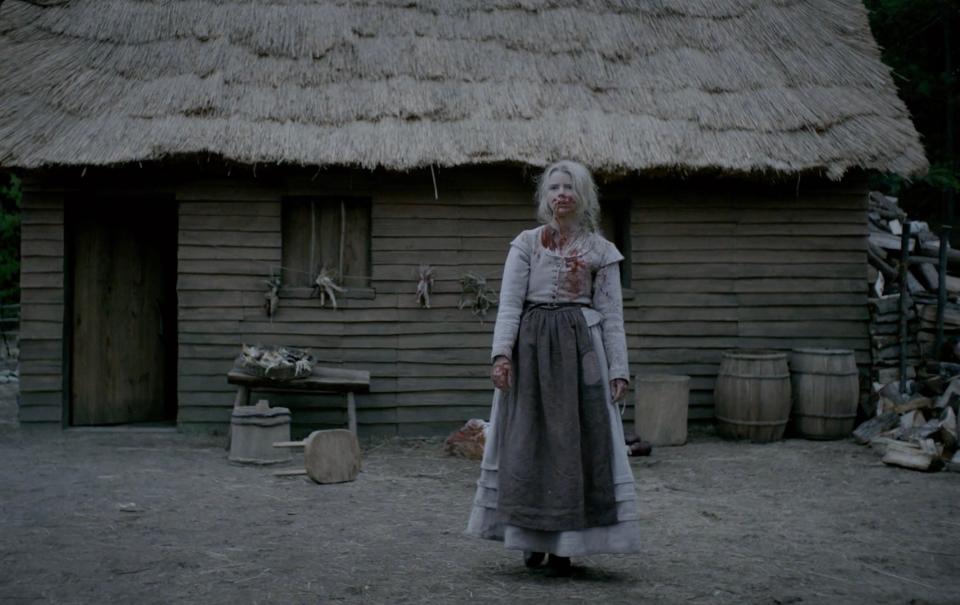
If you too have ever wanted to live deliciously, or have just experienced the angst of being a teenage girl at any point in time, then "The Witch," directed by Robert Eggers, is for you.
Thomasin (Anya Taylor-Joy) and her Puritan family are ousted from the Massachusetts colony where they'd settled after arriving in the New World, causing the family to build a new homestead on the outskirts of the village near the woods at the start of the film.
Not only does she have to contend with the perennial issues of teenage girl-dom (caring for her younger siblings, dealing with her mother's overprotective nature, and navigating her changing body), but there's something stalking the family in the forest, and it might just be an evil old witch.
The costumes, set, and dialogue instantly transport viewers back in time, and it's deliciously horrifying to watch the family unit unravel, although Thomasin, of course, ends up taking most of the blame.
While Eggers' 2019 film "The Lighthouse" was a field day for film bros, "The Witch," in our opinion, is solely for the girls. — LT
"Mandy" (2018)

Come for Nic Cage's beautifully deranged performance, stay for the rogue biker gangs, cult members, trippy visuals, and blacksmithing montages. At least, that's how we'd describe "Mandy" to anyone who's unfortunate enough to have never seen this technicolor, hallucinogenic horror masterpiece.
Ostensibly, the film follows Cage's character as he sets out to avenge his dead girlfriend (Andrea Riseborough), who's killed by a group of violent bikers hired by a New Age cult.
And while the action sequences are impressive, it's really Cage's performance that's the star of the show. Heartbroken over his lost love but determined to avenge her, "Mandy" is a career high for Cage, and a must-see for anyone remotely invested in his filmography. — LT
"Hereditary" (2018)

Ari Aster's first feature is one for the books: At first glance, the film appears to be a tense family drama involving the Graham family, whose matriarch Ellen recently died. But after a certain freak accident involving a telephone pole (IYKYK), the atmosphere in the Graham home devolves into something far more sinister.
Featuring a powerhouse performance from Toni Collette (she IS mother) plus stellar supporting appearances from Alex Wolff, Milly Shapiro, and Ann Dowd, "Hereditary" definitely isn't for the faint of heart. The last few scenes in particular are spectacularly violent, and Aster isn't one to cut away from an important shot even if it features, say, a disembodied decaying head.
But Aster never lets the gore distract from the terrifying family dynamics at hand — making "Hereditary" a must-watch for true horror fans. — LT
"Midsommar" (2019)

Anyone who's ever experienced a nasty breakup will probably identify with some part of Aster's second feature "Midsommar." But whether or not you feel more sympathetic towards Dani (Florence Pugh), an anxious young woman trying to save her relationship, or Christian (Jack Reynor), Dani's increasingly apathetic partner, depends on your attachment style.
Unlike "Hereditary," most of "Midsommar" takes places in the brightly-lit, bucolic fields of remote Sweden, although that doesn't make the events of the film (murder-suicide, ritual sacrifice, and sexual assault, to name a few) any less unsettling.
With "Midsommar," Aster proves that a sunny field filled with revelers is just as sinister as a treehouse packed with cult members at midnight — and that he's one of the modern masters of the horror genre. — LT
"Malignant" (2021)
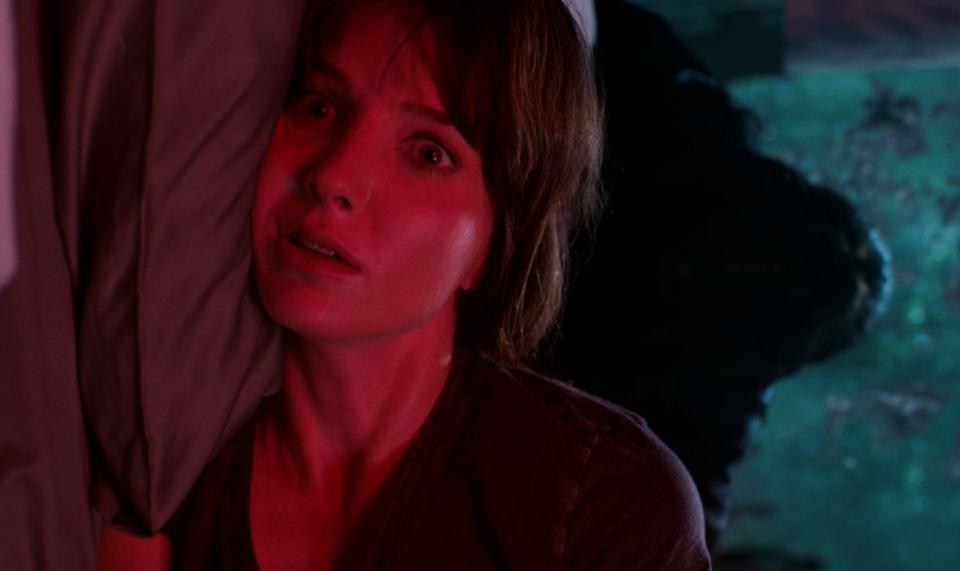
"Malignant" is easily one of the most divisive horror films in recent memory — viewers and critics either adored it or despised it — but it's essential viewing for a few reasons.
It's one of the few non-franchise films from Wan, the Australian filmmaker and modern horror icon behind the "Saw" and "Conjuring" movies. And that's not to knock franchises, generally. There are more than a few franchise films on this list, and "The Conjuring" specifically is the highest-grossing horror franchise of all time. But in terms of sheer originality, there's a reason the first "Saw" film and "Malignant" are the only Wan films on our list.
In an original story by Wan, his wife Ingrid Bisu, and screenwriter Akela Cooper, a woman named Madison (Annabelle Wallis) is plagued by terrifying visions of gruesome killings and eventually comes to find out that the visions are (1) real and (2) closely connected to her own twisted childhood. The third-act twist is, to put it mildly, completely batshit in the best way possible, and Wan leans all the way into his love of practical effects and high camp in his memorable unveiling of the "Malignant" villain, Gabriel.
Don't read spoilers. You need to see to believe, and this wholly original story — a rarity in films today, but especially in genre films — is well worth your time. — CM
"Deadstream" (2022)
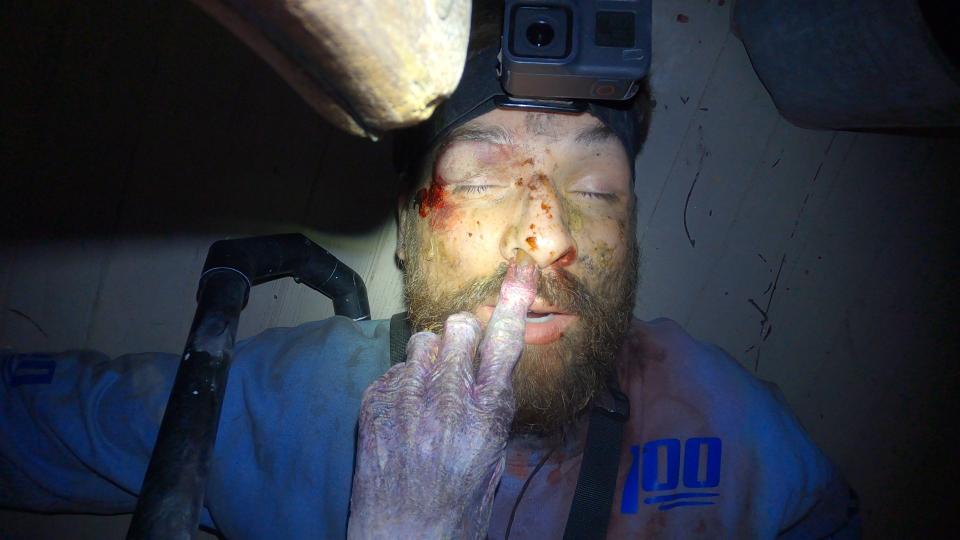
A disgraced YouTuber a là PewDiePie or MrBeast is the subject of this incisive, hilarious, and terrifying film, which follows Shawn (Joseph Winter) as he livestreams from a haunted house. Desperate to win back followers after a scandal, the self-centered and skeptical Shawn soon realizes that he's not alone in the house, and that a super fan named Chrissy isn't what she seems.
"Deadstream" is at once a sendup of vlogger and cancel culture, as well as a genuinely spooky ghost story, and the fact that the film is shot entirely from the POV of a viewer of Shawn's livestreams (the crew seems to have used GoPros to achieve this) adds to the immersive effect.
Extremely online horror fans should definitely check out "Deadstream," a much-needed revitalization of the found footage horror trope. — LT
"Talk to Me" (2022)

Directors Danny and Michael Philippou's audacious debut feature film does little to betray their past as popular prank YouTubers, but that's not to say "Talk to Me" isn't as meticulously plotted and flawlessly executed as their videos.
Indeed, listening to Danny and Michael talk about the film, it's clear that they were able to hone their ideas for this chilling feature while working on clips like "Real Life Mortal Kombat Fatalities!"
"Talk to Me" follows Mia, a grieving teenager who's encouraged by her friends to try a new high: getting possessed by dead spirits via a cursed hand.
Unsurprisingly, it's not a great idea to open your body to vengeful ghosts, and things take a terrible turn when Mia's friend's younger brother Riley becomes possessed after a go with the hand. The film also features a pessimistic ending, which might not be for everyone, but definitely works in the context of the story.
One of the most original horror films in recent years, "Talk to Me" is sure to keep you up at night. — LT
Read the original article on Insider

 Yahoo News
Yahoo News 
